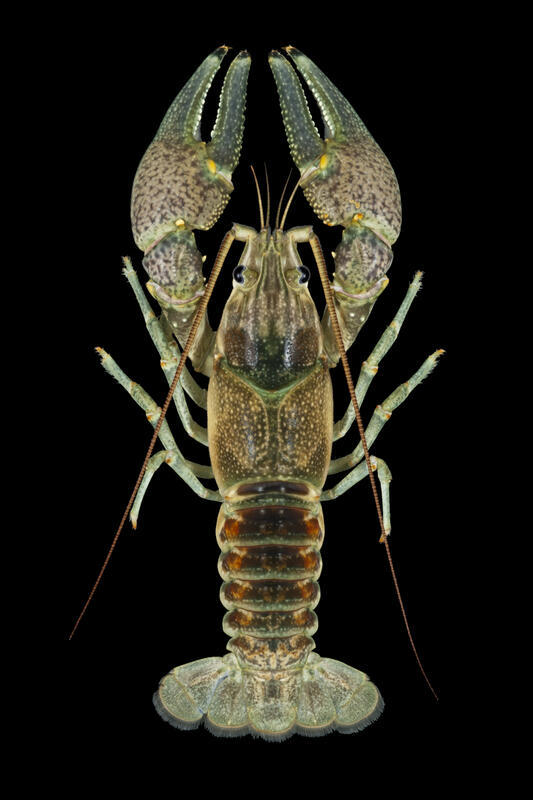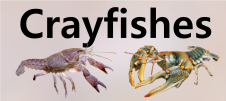







Loading profile. Please wait . . .
Faxonius juvenilis (Hagen, 1870)
Kentucky River Crayfish




Federal Protection: No US federal protection
State Protection: No Georgia state protection
Global Rank: G4
State Rank: SNA
Element Locations Tracked in Biotics: No
SWAP 2015 Species of Greatest Conservation Need (SGCN): No
SWAP 2025 Species of Greatest Conservation Need (SGCN): No
2025 SGCN Priority Tier: None
Element Occurrences (EOs) in Georgia: 0
Habitat Summary for element in Georgia: Associated with rocks or woody debris in flowing and quiet areas of small streams to medium-sized rivers and reservoirs
The Kentucky River Crayfish has brown saddle markings in front of and behind the areola and the back is tan or light brown. The abdomen is reddish brown and the claws have a purplish-greenish hue. The tips of the fingers are orange and black and there are two rows of tubercles along the mesial margin of the palm. The areola is fairly wide and there is a single cervical spine on each side of the carapace. The rostrum is parallel sided or slightly narrower in the middle (“pinched”) and has marginal spines or tubercles. This species reaches a maximum total body length of about 75 mm (3 in). Note: Based on data presented by Crandall and De Grave (2017), this species was removed from the genus Orconectes and placed in Faxonius.
No other crayfish species that occurs with the Kentucky River Crayfish has a similar color pattern, claw, or rostrum shape.
This species can be found in streams and reservoirs, usually among rocks or woody debris.
No studies of the Kentucky River Crayfish are known. Crayfishes are considered opportunistic omnivores and likely feed on live and decaying vegetation, aquatic insect larvae, small fishes, and dead animal matter.
Males in reproductive condition have been found in every month of the year and females with eggs have been found in April (Taylor and Schuster 2004, C. Skelton unpubl. data).
Flipping larger rocks in just about any habitat in a stream should turn up this species if it is present. In reservoirs, turning rocks along the shore or using baited minnow traps can be effective.
As its name implies, the Kentucky River Crayfish is native to the Kentucky River system and other Ohio River tributaries in Kentucky. In Georgia, it is currently known only from Little River and Murder Creek arms of Lake Sinclair (Oconee River system) and the lower flowing reaches of Murder Creek.
Since this species is not native to Georgia, no threats are recognized.
This species is not native to Georgia and should be considered invasive.
This species is known to be a rapid invader and has the capacity to displace native Georgia species with which it occurs. Now that it is in the state it is more likely to be moved to additional river systems. Never move crayfishes from one waterbody to another, and if fishing with crayfish, only use them in the stream in which they were captured. Any specimens encountered should be collected and humanely euthanized by freezing.
Crandall, K.A., and S. De Grave. 2017. An updated classification of the freshwater crayfishes (Decapoda: Astacidea) of the world, with a complete species list. Journal of Crustacean Biology 2017:1-39.
Hobbs, H.H., Jr. 1989. An illustrated checklist of the American crayfishes (Decapoda: Astacidae, Cambaridae, and Parastacidae). Smithsonian Contributions to Zoology 480:1–236.
Taylor, C.A., G.A. Schuster, J.E. Cooper, R.J. DiStefano, A.G. Eversole, P. Hamr, H.H. Hobbs III, H.W. Robison, C.E. Skelton, and R.F. Thoma. 2007. A reassessment of the conservation status of crayfishes of the United States and Canada after 10+ years of increased awareness. Fisheries 32:372–389.
Christopher E. Skelton
C. Skelton, 2012: original account
C. Skelton, February 2019: general update of account.
D.Weiler, October 2019: added photo